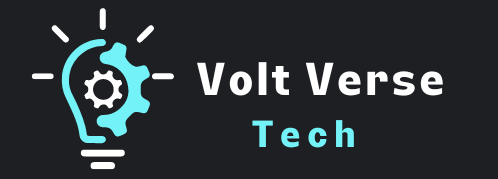In today’s dynamic and data-driven world, IT operations face an ever-increasing challenge in managing and maintaining complex IT infrastructures. With the proliferation of cloud-based applications, microservices architectures, and the growing adoption of DevOps methodologies, IT teams are grappling with a vast amount of data, making it increasingly difficult to identify and resolve issues proactively. This is where artificial intelligence for IT operations (AIOps) emerges as a transformative force, empowering IT teams to navigate the complexities of modern IT operations with greater efficiency and effectiveness.
Table of Contents
Also Read: AI Trends to Watch in 2023
What is AIOps?
AIOps, an acronym for artificial intelligence for IT operations, represents the convergence of artificial intelligence (AI) and machine learning (ML) techniques with IT operations management. It encompasses a suite of tools and technologies that harness the power of AI to automate and streamline IT operations processes, enabling IT teams to gain deeper insights, optimize performance, and proactively prevent and resolve incidents.
How does AIOps work?

AIOps operates by collecting, analyzing, and correlating vast amounts of data from various sources within the IT infrastructure, including logs, metrics, and events. This data is then fed into AI and ML algorithms that identify patterns, anomalies, and correlations, providing IT teams with actionable insights into the health and performance of their systems. AIOps empowers IT teams to:
- Proactive Anomaly Detection: AIOps algorithms can identify unusual patterns and deviations from normal behavior, enabling IT teams to proactively identify and address potential issues before they escalate into major outages.
- Root Cause Analysis: AIOps can analyze complex data sets to identify the root causes of incidents, reducing the time and effort required to resolve issues.
- Automated Incident Response: AIOps can automate routine tasks and processes, such as triggering alerts, escalating incidents, and initiating corrective actions, freeing up IT teams to focus on more strategic initiatives.
- Predictive Analytics: AIOps can leverage advanced machine learning techniques to predict future events, such as potential hardware failures or performance bottlenecks, enabling proactive maintenance and capacity planning.
Implementing AIOps
Adopting AIOps requires careful planning and consideration of the organization’s specific IT environment and goals. Key steps in implementing AIOps include:
- Identifying AIOps Use Cases: Prioritize specific areas where AIOps can bring the most significant impact, such as performance optimization, incident resolution, or capacity planning.
- Data Collection and Preparation: Establish a data collection strategy to gather relevant data from various IT infrastructure components and ensure data quality and consistency.
- AIOps Platform Selection: Evaluate and select an AIOps platform that aligns with the organization’s needs and integrates seamlessly with existing IT systems.
- Change Management and Training: Prepare IT teams for the adoption of AIOps, providing training on the new tools and processes, and fostering a culture of data-driven decision-making.
Benefits of AIOps
Organizations that successfully implement AIOps can reap a multitude of benefits, including:
- Reduced Mean Time to Resolution (MTTR): AIOps enables faster identification and resolution of incidents, minimizing downtime and improving overall IT service delivery.
- Improved IT Performance and Proactivity: AIOps provides insights into system performance and predicts potential issues, enabling proactive maintenance and capacity planning.
- Enhanced IT Efficiency and Productivity: AIOps automates routine tasks and processes, freeing up IT teams to focus on more strategic initiatives and innovation.
- Reduced Costs: AIOps helps optimize resource utilization, reduce downtime, and minimize the impact of incidents, leading to lower IT costs.
AIOps Use Cases
AIOps has a wide range of applications across various IT domains, including:
- Performance Management: AIOps can proactively identify performance bottlenecks, optimize resource utilization, and ensure seamless application performance.
- Incident Management: AIOps can automate incident detection, root cause analysis, and automated remediation, reducing MTTR and improving IT service availability.
- Capacity Planning: AIOps can predict future demand and resource requirements, enabling proactive capacity planning to avoid performance bottlenecks and ensure scalability.
- Security Management: AIOps can analyze security logs and events to detect anomalies, identify potential cybersecurity threats, and automate incident response.
References
- Gartner: Gartner Predicts the Future of IT Operations
- IBM: What is AIOps (Artificial Intelligence for IT Operations)?
- TechTarget: Definition of AIOps (Artificial Intelligence for IT Operations)
- Accenture: AIOps | AI for IT Operations Platforms

Conclusion
In the ever-evolving landscape of IT operations, artificial intelligence (AI) has emerged as a game-changer, empowering IT teams to navigate the complexities of modern IT infrastructures with unprecedented efficiency and effectiveness. AIOps, the convergence of AI and machine learning (ML) with IT operations management, has revolutionized the way IT teams manage and maintain their systems, enabling them to proactively identify and resolve issues, optimize performance, and achieve greater agility and resilience.
By harnessing the power of AI and ML, AIOps provides IT teams with actionable insights into the health and performance of their systems, enabling them to anticipate potential problems before they occur. This proactive approach to IT management has significantly reduced downtime, improved incident resolution times, and optimized resource utilization, leading to substantial cost savings and enhanced business continuity.
The transformative impact of AIOps extends beyond mere automation and efficiency gains. By empowering IT teams to make data-driven decisions and achieve deeper understanding of their systems, AIOps fosters a culture of innovation and continuous improvement within IT organizations. This positive transformation has enabled IT teams to become strategic partners in driving business growth and success.
As the IT landscape continues to evolve, AIOps is poised to play an increasingly crucial role in ensuring the seamless operation and performance of critical IT systems. With its ability to analyze vast amounts of data, identify patterns, and predict future events, AIOps will continue to empower IT teams to navigate the complexities of modern IT operations with greater efficiency, effectiveness, and foresight.
Frequently Asked Questions (FAQs)
Q: How can AI help in IT operations?
A: AI can help in IT operations in a number of ways, including:
- Proactive problem detection: AI can analyze data from various sources, such as logs, metrics, and events, to identify patterns and anomalies that may indicate potential problems. This can help IT teams prevent problems before they occur or minimize their impact.
- Automated incident response: AI can be used to automate routine tasks associated with incident response, such as creating tickets, triggering alerts, and escalating incidents to appropriate personnel. This can free up IT staff to focus on more complex tasks.
- Improved decision-making: AI can provide IT teams with insights into the performance and health of their systems, which can help them make better decisions about resource allocation, capacity planning, and change management.
Q: How is AI used in the IT industry?
A: AI is being used in a variety of ways in the IT industry, including:
- IT operations: As described above, AI is being used to automate IT operations tasks, improve incident response, and make better decisions about resource allocation.
- Cybersecurity: AI is being used to detect and prevent cyberattacks, such as phishing attacks and malware infections.
- Customer service: AI is being used to provide chatbots and virtual assistants that can answer customer questions and resolve common issues.
- Product development: AI is being used to develop new products and services, such as self-driving cars and personalized recommendations.
Q: What is generative AI for IT operations?
A: Generative AI is a type of AI that can generate new data, such as text, images, or code. In the context of IT operations, generative AI can be used to:
- Identify potential problems: Generative AI can analyze data from various sources to identify patterns and anomalies that may indicate potential problems.
- Recommend solutions: Generative AI can analyze data from past incidents to recommend potential solutions to new problems.
- Create training data: Generative AI can create new training data for machine learning algorithms, which can improve the performance of AI-powered IT operations tools.
Q: How do you use AI in Ops?
A: There are a number of ways to use AI in IT operations. Some common approaches include:
- Using AIOps platforms: AIOps platforms are pre-built software solutions that combine AI and ML algorithms with IT operations tools. These platforms can automate many IT operations tasks and provide insights into the performance and health of IT systems.
- Developing custom AI solutions: Organizations can also develop their own custom AI solutions to address specific IT operations challenges. This approach requires more expertise and resources, but it can give organizations more flexibility and control over their AI implementation.
- Using cloud-based AI services: Cloud-based AI services can provide organizations with access to AI capabilities without requiring them to build and maintain their own AI infrastructure. These services can be a good option for organizations that are just starting to explore the use of AI in IT operations.
Q: Why do we need AIOps?
A: AIOps is needed for a number of reasons, including:
- The growing complexity of IT infrastructures: Modern IT infrastructures are becoming increasingly complex, with more components, more data, and more interdependencies. This complexity makes it difficult for IT teams to manually monitor and manage their systems effectively.
- The increasing demand for IT agility: Businesses are increasingly demanding that IT be able to respond quickly to changes in the business environment. This requires IT teams to be able to identify and resolve problems quickly and efficiently.
- The need for improved IT performance: Businesses are also demanding that IT deliver high levels of performance and availability. This requires IT teams to be able to optimize their systems and proactively prevent problems.
Q: Why is AIOps important?
AIOps is important because it can help IT teams address the challenges of modern IT operations. By automating tasks, providing insights, and enabling proactive problem-solving, AIOps can help IT teams improve the performance, agility, and reliability of their systems.
Q: What are AI operations and applications?
A: AI operations, also known as AIOps, is the use of artificial intelligence (AI) and machine learning (ML) to automate and improve IT operations processes. AI operations applications are used to collect, analyze, and correlate data from various IT systems to identify patterns, anomalies, and correlations. This information is then used to automate tasks, provide insights, and enable proactive problem-solving.
Q: What is the difference between AI and AIOps?
A: AI is a broader term that refers to the field of artificial intelligence, which is the study of how to make machines intelligent. AIOps is a specific application of AI to IT operations.

Nouman Satti is a tech visionary on a mission to demystify the world of AI at Volt Verse Tech. With a passion for innovation and a knack for translating complex concepts into simple, actionable insights, Nouman is your guide to navigating the ‘nice’ side of AI. From neural networks to the latest breakthroughs, he’s your trusted source for all things tech. Join him on a journey into the future of artificial intelligence, one insightful article at a time.

1 thought on “What is AIOps? Role of Artificial Intelligence for IT Operations”